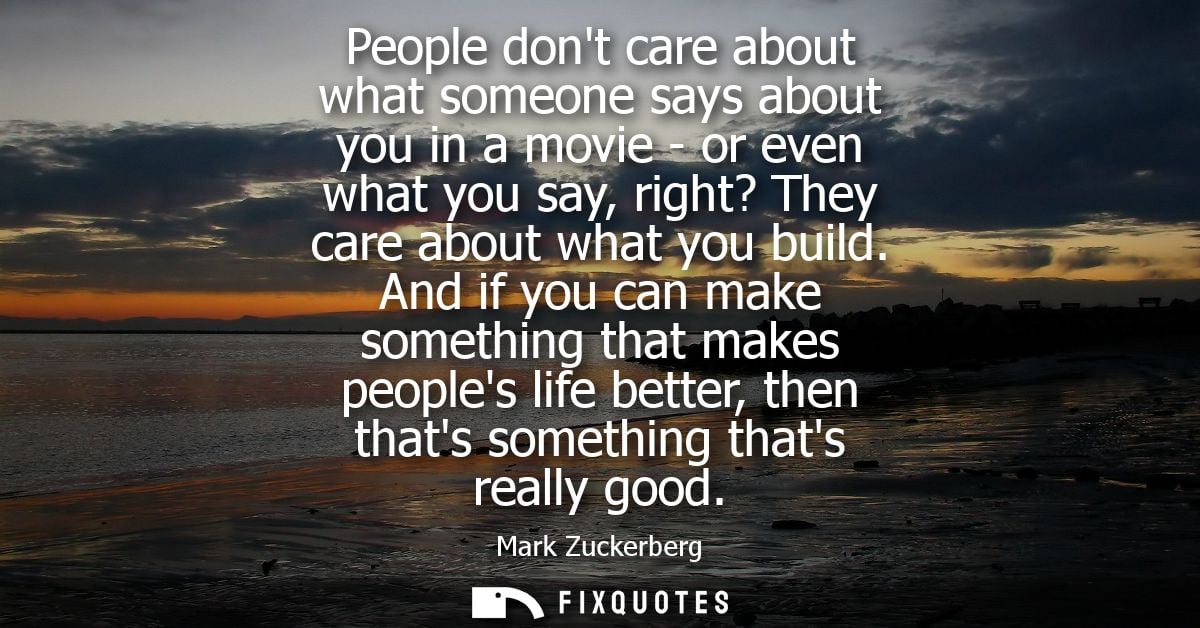"People don't care about what someone says about you in a movie - or even what you say, right? They care about what you build. And if you can make something that makes people's life better, then that's something that's really good"
About this Quote
Zuckerberg emphasizes a builder’s ethic: in a world saturated with commentary, branding, and mythmaking, durable respect comes from creating tangible value. Public narratives, whether praise or criticism, are fleeting signals; products and services that solve real problems become the enduring story. The metric that matters isn’t how clever the messaging sounds or how dramatic someone’s portrayal is, but whether people choose to use what you made because it makes their lives easier, richer, or more meaningful.
There’s a quiet defiance in that stance. It invites focus, concentration on craft, execution, and user outcomes, over the noise of reputation management. It also shifts the locus of validation from peers and pundits to the people you serve. If they return, recommend, and build habits around your work, you’ve earned a kind of legitimacy that no interview or profile can confer. This is a pragmatic path to influence: make something that works, keep iterating until it works better, and the work will speak louder than any narrative.
Embedded is a moral qualifier: better. Building is not neutral. The value of what you ship is ultimately judged by its effects on human lives. That sets a high bar for empathy, responsibility, and long-term thinking. It urges creators to measure success not just in growth curves but in outcomes, access expanded, friction reduced, capabilities unlocked. It also encourages resilience. Criticism, even when fair, shouldn’t derail the pursuit of usefulness; the response is to improve the product until it credibly answers the critique.
For entrepreneurs, artists, and technologists, the lesson is to prioritize utility over optics and iteration over image. Speak less, build more, and let impact accumulate. Over time, the most persuasive story is the one embedded in what people use every day, and how it quietly upgrades the texture of their lives.
More details
About the Author

